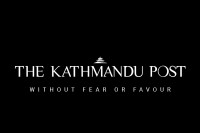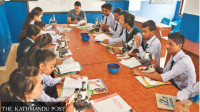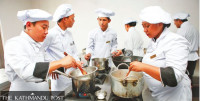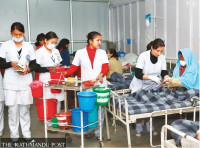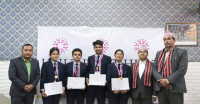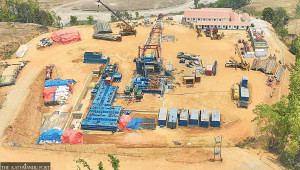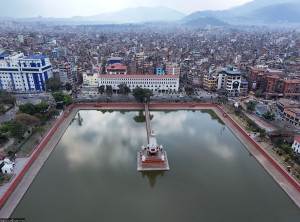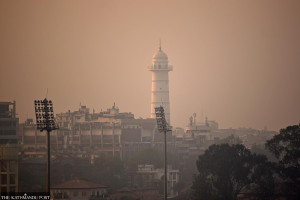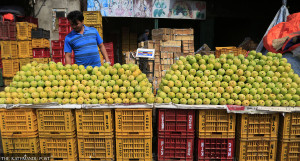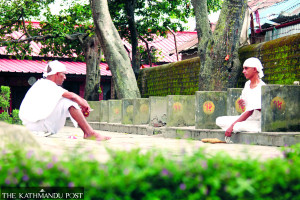Miscellaneous
Inside the corridors of power
Daya Ram Bhakta Mathema’s Anubhav ra Anubhuti delves into the inner workings of the life and times of two influential monarchs
Anubhav ra Anubhuti (Feelings and Experiences) is the memoir, published posthumously, of Mir Subba Daya Ram Bhakta Mathema, who, following his family’s footsteps, served two kings, namely King Tribhuvan and King Mahendra, spanning a period of seventeen years from 1944 to 1961. For the common people, the inner workings of the palace secretariat or the then power corridors of Nepal have remained a mystery—almost bordering on dark secrecy—because information was rarely made available. The information people have obtained are mostly based on hearsay and rumours. However, with the demise of the monarchy, information is gradually coming out in the form of biographies, memoirs, and personal diaries. Recently, another book in the market with a similar title, Anubhuti ra Avibyakti (Feelings and Expressions) by a retired palace secretary, Rewati Raman Khanal, who also served two generations of kings in Nepal, delved into similar motifs. If late Mathema’s primary take is on king Tribhuvan, Khanal’s is on king Mahendra. In the annals of Nepal’s modern day political history, these two kings opened up two diametrically opposite chapters—king Tribhuvan is accredited for opening up the democratic era, while king Mahendra for closing it. Serving these two kings must have been like dipping two feet simultaneously in a bucket filled with hot water and the other with ice.
There is even a simmering animosity between king Tribhuvan and his crown prince, Mahendra, over the latter’s marriage proposal. It would appear that Nepali history does in fact repeat itself. The gruesome palace massacre that took place on June 1, 2001 is also blamed, allegedly, on queen Aishwarya’s refusal to accept the crown prince Dipendra’s marriage proposal. In Anubhuti ra Avibyakti, Khanal speaks of two Nepali words durbar (palace) and tarbar (sword), implying risks and returns, rewards and sanctions of working inside the corridors of power. But one has to read Mathema to get the full grasp of the meaning and situation behind durbar and tarbar.
The memoir is exciting in a sense that the two monarchical eras represented the most volatile, tumultuous periods, not just for Nepal but the world as a whole. The Mathemas were in service at the royal palace when the world saw two World Wars, India being freed from the clutches of the British Empire, the beginning of the cold war, the annexation of Tibet by China and the Indo-China war. Invariably, Nepal could not remain untouched by these epoch-making events. Within Nepal, after the big earthquake of 1934, political turbulence took a turn; the establishment of Praja Parishad, the martyrdom of the four commoners, king’s self-exile to India, armed insurrection against Rana oligarchs by the Nepali Congress, initiation of democracy, dependency on India, delays in holding elections and writing of the constitution and frequent changes in government, plagued continued progress, much like today. That is why, while reading the book, you are time and again confronted with the question: Does history repeats itself in Nepal? However, the book leaves no optimism regarding the repetition of history, especially for rajabadis, currently, expecting the revival of monarchy, restoration of Hinduism, and doing away with federalism. The book speaks of a monarchical dystopia rather than utopia and reveals the inner workings of durbar and tarbar.
With his family connections, in spite of his resistance, Mr Mathema was recruited as a supervisor to look after the palace gardens. From there on, he rose to become a confidant and personal aide to king Tribhuvan. During political agitations of the late 1940s, he acted as a mediator, a messenger, and a smuggler of highly-confidential information between the king and the political parties fighting against the Rana regime. He accompanied king Tribhuvan not only during his life time but also during his death. He travelled all the way to Zurich, Switzerland to bring the body of the king, who died on March 13, 1955, back to Nepal for the monarch’s last rites.
His stint with king Mahendra initially did not go very well; though he was able later to repair some damage and build confidence. During Tribhuvan’s time, Mathema’s father was more loyal to Sri Teen Maharajas or the then Rana prime minister while he was loyal to Sri Panch—the king. Maybe because of this, Mahendra did not trust him much. In the aftermath of Jana Sewa Kanda—the burning of the cinema hall belonging to the Mathema family—he was first suspended and later fired from the job. This seems to have been a key turning point in his life—“Mathema anathema” is you will. There are a host of conspiracy theories surrounding the incident. The book does provide some lengthy description of the incident but leaves it to the readers to ponder over the conspiring power behind it all. Just before the incident, Mathema had decided to resign from his job and was planning to fly to London for higher studies. I suppose, another book, by Mr Radharaman Upadhayaya (Jagir Yatra), starts with that particular incident of arson. In the book he has ironically sketched the incident where the Gorkhapatra, the state news agency, did not carry the news and the Juddha Barun Yantra, the fire brigade, did attempt to douse the fire, even while both agencies were located a stone’s throw away from the Jana Sewa Cinema Hall—the present-day Bishal Bazaar at New Road. The cinema hall was burnt to the ground, in spite of the fact that security agencies were informed about the incident. There is a dossier of insightful information in this particular memoir. Even today, people will be surprised to know that Mathema was behind the establishment of businesses and institutions like Nabil Bank, Surya Tobacco and Tribhuvan University. He must also be accredited for initiating diplomatic ties with the then West Germany.
The 400 page memoir is divided into six chapters; it is chapters three and four that the readers will most likely find the most exciting. These two chapters combine together the opening and closing of Nepal’s experiment with democracy. The book, written in a personal tone, is descriptive rather than inferential.
The readers have to use their mind and imagination to understand why and what must have transpired during the incidents mentioned in the memoir. And given the content of the book, the old fashioned design and typo errors deserve excuse.




 23.12°C Kathmandu
23.12°C Kathmandu
